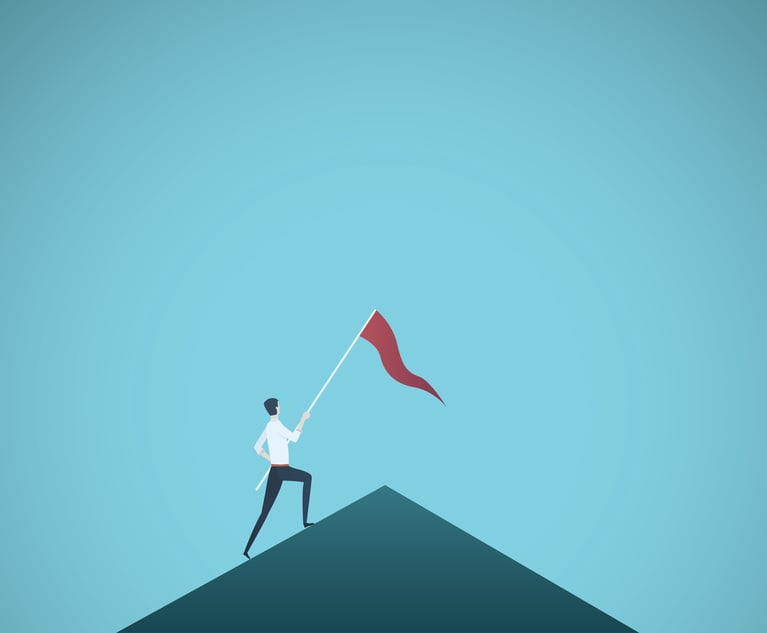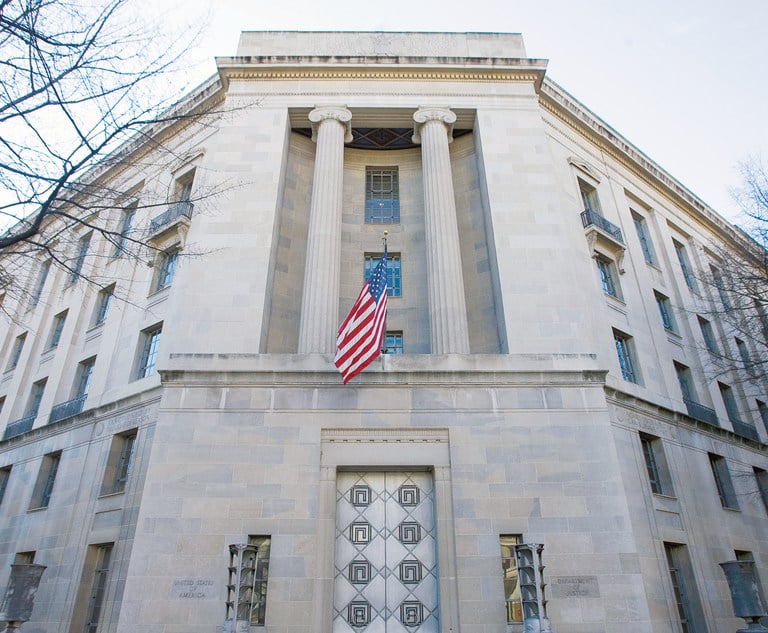Digital revolution in copyright law
If you were the Walt Disney Co., and you saw thousands upon thousands of fan-created videos that featured your intellectual property cropping up on YouTube, would you crack down on those violations or would you Let It Go?
June 26, 2014 at 08:00 PM
7 minute read
If you were the Walt Disney Co., and you saw thousands upon thousands of fan-created videos that featured your intellectual property cropping up on YouTube, would you crack down on those violations or would you “Let It Go?”
This type of conundrum illustrates an issue that copyright holders face in this era of pervasive digital technology. We've come a long way since the early days of Napster, but the same questions posed by that technology still plague copyright law today. Namely, will digital technology sap the value of my intellectual property?
“Law is becoming more accepting and open to technology,” says Jennifer Baltimore, deputy general counsel of Lincoln Center for the Performing Arts. “There seems to be more of a permissive trend with respect to technology.” Baltimore has almost 20 years of experience working with entertainment IP law, primarily working with the intersection of music and new media, having spent time at AOL, Universal Music Group and MySpace, and has seen the music industry go through challenging periods from the growth of Napster to the current propagation of online streaming services.
“The proliferation of infringement in new technology arenas, new platforms and technologies is increasing over time,” explains Rhonda R. Trotter, partner and co-head of the trademark, copyright and false advertising group and office managing partner in the Los Angeles office of Kaye Scholer. “Now we're at a point, 15 years post-Napster, where consumers of IP content are accustomed to being able to obtain access to the content for free in many instances and quite easily. This presents a challenge for owners of IP in terms of what extent and what means they use to try and maintain the value while at the same time balancing that against the interest of making sure they don't perturb consumers that are the base for their commercial success.”
Resistance is futile
Any breakthrough in communication technology brings with it apprehension from existing stakeholders. Monks were concerned that the printing press would eliminate the need for their manuscript copying skills and, more recently, movie studios were afraid the newfangled invention called television would drive them to bankruptcy. The same skepticism held true for copyright owners when they looked into the future of digital technology.
“Resistance from copyright owners is the reason there was a Napster,” Baltimore explains. “They were used to a world that was tangible, concrete. You needed the master copy of a recording… There was a sense of security derived from controlling the master recording.”
“Eventually, technology was able to produce a good quality copy from something other than the master, and copyright owners did not foresee that day,” she says. “This paved the way for Napster and, instead of creating a licensing structure on the front end, the music industry was forced to play catch up.”
Fast-forward 15 years and the digital music landscape is far different for copyright holders. Now, with so many digital platforms available to users, the ways in which a copyright can be infringed upon are legion.
“Copyright owners must be selective from a resources standpoint, the methods they used to go after infringers and even if they go after them,” says Trotter. “As all of us have become more accustomed to dealing with content online or in mobile media and social media platforms, the real danger is that the content owners will create an adversarial relationship with the consuming public.”
Dealing with intermediaries
But legal methods are not the only strategies for dealing with potential infringers. Sometimes the smart move is to follow the money and deal with intermediaries.
These intermediaries consist of companies that are in some way involved in the process of distributing copyrighted material on the Internet. This can mean approaching search engines such as Google. Since most people come across pirated content via an Internet search, Google is often the conduit that leads people to this type of content.
Entertainment companies are working with Google to convince the search giant to give lower priority to sites that host pirated content. Since Google's algorithm already allows for prioritization of searches—videos hosted on YouTube often get preferential treatment by virtue of Google's ownership of that site—entertainment and media companies are encouraging search engine providers to bury the illegal content. This initiative goes even further in Europe, where companies are working to convince Internet hosting providers to block illegal content altogether.
The campaign to combat illegal content is not quite cut-and-dried, however. While media and entertainment companies rightly bristle at the thought of entire works—episodes of television shows or whole feature films—being made available for free on pirate sites, the use of smaller portions of copyrighted content is a different story. If an infringer merely chops up a longer work into bite-sized pieces and posts those online, it's a more serious matter than if someone chooses to use copyrighted material in a fair use case, like a parody.
The future of copyright law
While patent reform is a hot topic in Washington, D.C., these days, potential reform to copyright law has not received as much attention. Perhaps the biggest piece of legislation in this arena in the past 20 years was the Digital Millennium Copyright Act (DMCA), which was passed in 1998.
“The DMCA has strengths and weaknesses on both sides,” says Trotter. “From the standpoint of content owners, it provides a quick and simple process for getting infringing material taken down from a site, provided one has identified it as existing.” But this puts the onus on the copyright owners to police the content, which is a tremendous burden from a resources standpoint.
With the changes in digital technology and customer expectations that have occurred in the last 15 years, reform seems inevitable, though it's possible that the law may always lag behind the technology.
“Reform is on its way,” says Baltimore. “The copyright office issued a notice of inquiry to examine music licensing structures that exist today, asking questions about the royalty rate setting process and standards and whether statutory licenses are effective.”
Impactful cases
While the legislature has yet to consider sweeping reform, there are a number of court cases that are addressing trends in the copyright space. Michael Allan, a partner at Steptoe & Johnson LLP, cites two such cases from the past several years that have been impactful. The Motion Picture Association of America (MPAA) won a suit against Hotfile, a file sharing site and one of the most trafficked websites in the world. The site was given tens of thousands of repeat infringer notices, and, though the site's owner tried to behind the DMCA, the suit was a big win for the MPAA and the film industry.
In the music industry, Capitol Records, Inc. v. MP3tunes, LLC is worth noting, as it marks one of the first times where the CEO of a file sharing site was held liable along with the company, conceivably putting him on the hook for tens of millions of dollars in settlement money. These courtroom wins over massive sources of piracy will serve as notice to potential infringers that copyright holders will not sit back and allow people to steal their intellectual property.
Digital technology may have made it easier for people to infringe on copyrighted material, but it doesn't mean that entertainment companies like Viacom, AOL and Disney need to be frozen in place in their efforts to combat infringement.
This content has been archived. It is available through our partners, LexisNexis® and Bloomberg Law.
To view this content, please continue to their sites.
Not a Lexis Subscriber?
Subscribe Now
Not a Bloomberg Law Subscriber?
Subscribe Now
NOT FOR REPRINT
© 2025 ALM Global, LLC, All Rights Reserved. Request academic re-use from www.copyright.com. All other uses, submit a request to [email protected]. For more information visit Asset & Logo Licensing.
You Might Like
View All

State AG Hammers Homebuilder That Put $2,000-Per-Day Non-Disparagement Penalty in Buyer Contracts
3 minute read
Advance Auto Parts Hires GC Who Climbed From Bottom to Top of Lowe's Legal Department
2 minute read
Trending Stories
- 1Office of Special Counsel Chief Challenges Firing 'Without Cause'
- 2'Supervisor Is a Bully:' State High Court Weighs Liability for Campaign Against Appellate Staff Attorney
- 3The M&A Partners Who Drove the Most Business as Deal Leads in 2024
- 4Judge Finds Trump Administration Violated Order Blocking Funding Freeze
- 5CFPB Labor Union Files Twin Lawsuits Seeking to Prevent Agency's Closure
Who Got The Work
J. Brugh Lower of Gibbons has entered an appearance for industrial equipment supplier Devco Corporation in a pending trademark infringement lawsuit. The suit, accusing the defendant of selling knock-off Graco products, was filed Dec. 18 in New Jersey District Court by Rivkin Radler on behalf of Graco Inc. and Graco Minnesota. The case, assigned to U.S. District Judge Zahid N. Quraishi, is 3:24-cv-11294, Graco Inc. et al v. Devco Corporation.
Who Got The Work
Rebecca Maller-Stein and Kent A. Yalowitz of Arnold & Porter Kaye Scholer have entered their appearances for Hanaco Venture Capital and its executives, Lior Prosor and David Frankel, in a pending securities lawsuit. The action, filed on Dec. 24 in New York Southern District Court by Zell, Aron & Co. on behalf of Goldeneye Advisors, accuses the defendants of negligently and fraudulently managing the plaintiff's $1 million investment. The case, assigned to U.S. District Judge Vernon S. Broderick, is 1:24-cv-09918, Goldeneye Advisors, LLC v. Hanaco Venture Capital, Ltd. et al.
Who Got The Work
Attorneys from A&O Shearman has stepped in as defense counsel for Toronto-Dominion Bank and other defendants in a pending securities class action. The suit, filed Dec. 11 in New York Southern District Court by Bleichmar Fonti & Auld, accuses the defendants of concealing the bank's 'pervasive' deficiencies in regards to its compliance with the Bank Secrecy Act and the quality of its anti-money laundering controls. The case, assigned to U.S. District Judge Arun Subramanian, is 1:24-cv-09445, Gonzalez v. The Toronto-Dominion Bank et al.
Who Got The Work
Crown Castle International, a Pennsylvania company providing shared communications infrastructure, has turned to Luke D. Wolf of Gordon Rees Scully Mansukhani to fend off a pending breach-of-contract lawsuit. The court action, filed Nov. 25 in Michigan Eastern District Court by Hooper Hathaway PC on behalf of The Town Residences LLC, accuses Crown Castle of failing to transfer approximately $30,000 in utility payments from T-Mobile in breach of a roof-top lease and assignment agreement. The case, assigned to U.S. District Judge Susan K. Declercq, is 2:24-cv-13131, The Town Residences LLC v. T-Mobile US, Inc. et al.
Who Got The Work
Wilfred P. Coronato and Daniel M. Schwartz of McCarter & English have stepped in as defense counsel to Electrolux Home Products Inc. in a pending product liability lawsuit. The court action, filed Nov. 26 in New York Eastern District Court by Poulos Lopiccolo PC and Nagel Rice LLP on behalf of David Stern, alleges that the defendant's refrigerators’ drawers and shelving repeatedly break and fall apart within months after purchase. The case, assigned to U.S. District Judge Joan M. Azrack, is 2:24-cv-08204, Stern v. Electrolux Home Products, Inc.
Featured Firms
Law Offices of Gary Martin Hays & Associates, P.C.
(470) 294-1674
Law Offices of Mark E. Salomone
(857) 444-6468
Smith & Hassler
(713) 739-1250






